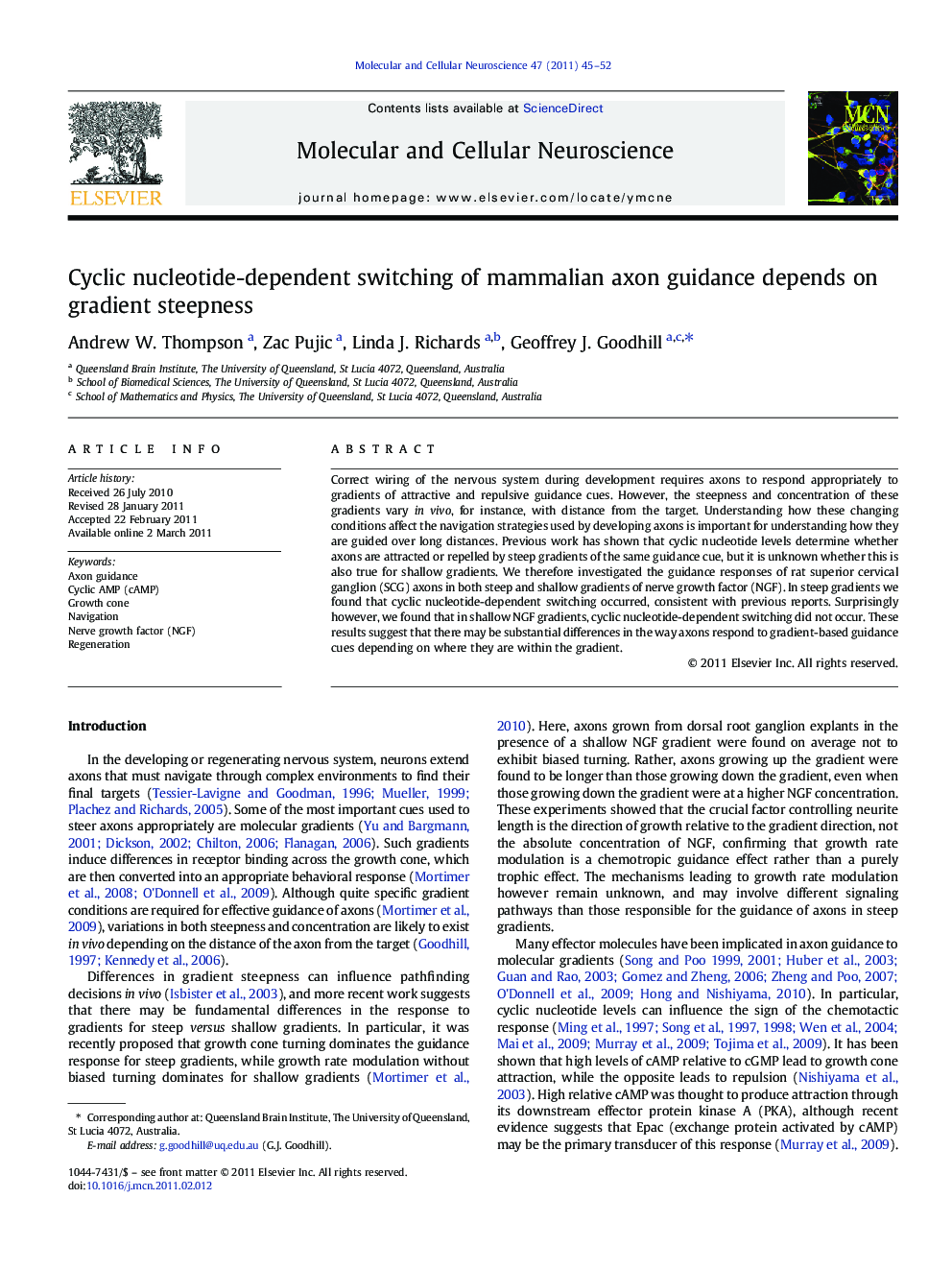| Article ID | Journal | Published Year | Pages | File Type |
|---|---|---|---|---|
| 2198729 | Molecular and Cellular Neuroscience | 2011 | 8 Pages |
Correct wiring of the nervous system during development requires axons to respond appropriately to gradients of attractive and repulsive guidance cues. However, the steepness and concentration of these gradients vary in vivo, for instance, with distance from the target. Understanding how these changing conditions affect the navigation strategies used by developing axons is important for understanding how they are guided over long distances. Previous work has shown that cyclic nucleotide levels determine whether axons are attracted or repelled by steep gradients of the same guidance cue, but it is unknown whether this is also true for shallow gradients. We therefore investigated the guidance responses of rat superior cervical ganglion (SCG) axons in both steep and shallow gradients of nerve growth factor (NGF). In steep gradients we found that cyclic nucleotide-dependent switching occurred, consistent with previous reports. Surprisingly however, we found that in shallow NGF gradients, cyclic nucleotide-dependent switching did not occur. These results suggest that there may be substantial differences in the way axons respond to gradient-based guidance cues depending on where they are within the gradient.
